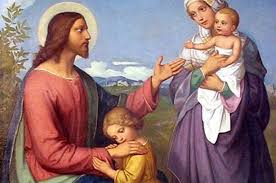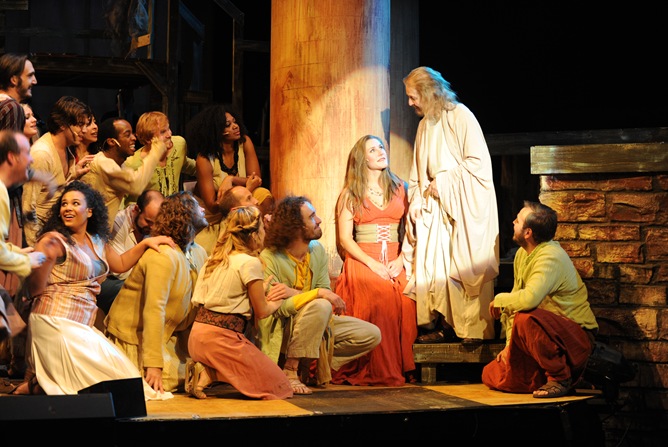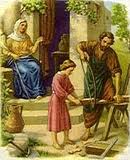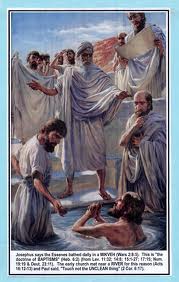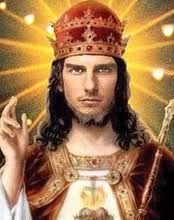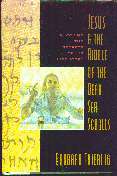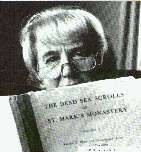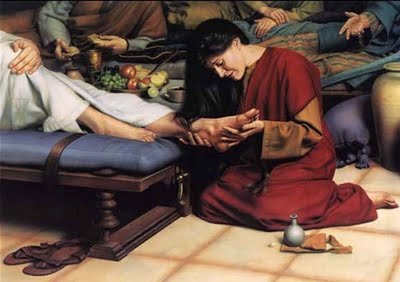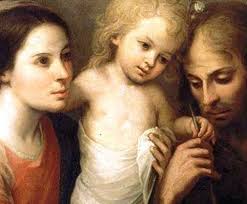|
|
|
Page 15 of 16 |
* PENTECOST*
THE WORLD'S GREATEST HOLINESS PREACHER! |
|
A New Light Dawns! |
|
, HIS WIVES AND CHILDREN
WERE REAL BUT HIDDEN FROM US
|
|
6 Commonly Proposed Pictures or Personalities of Jesus Christ |
||||||
|
|
|
|
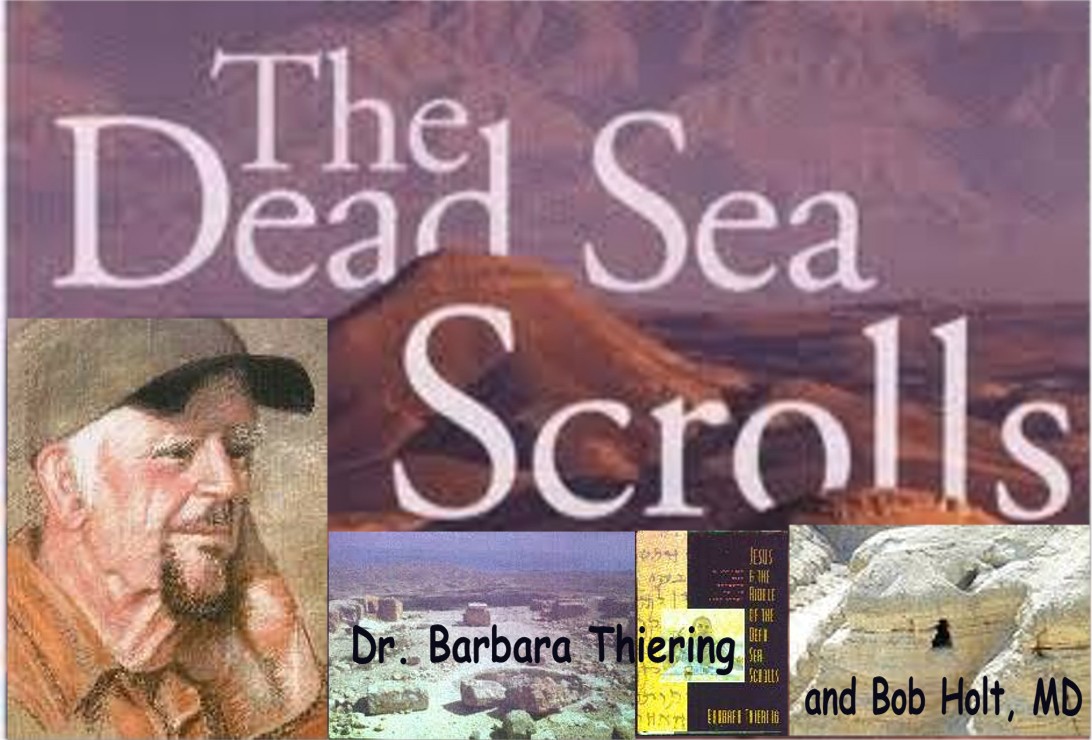
|
Dr. Robert F. Holt, MD pictured here with this montage of pictures representing the Dead Sea Scrolls, is obviously biased towards Jesus #3, that Jesus was an Essene, but to overcome the prevalent notion that the Essenes had no wives and children he'll have to educate his readers on this subject on this web page - as well as all those brain-washed by celibate Catholic priests and nuns for 16 centuries! |
|
Jewish War 2-8-(161) "However, they try their spouses for three years (TRIAL MARRIAGES); and if they find that they have their natural purgations thrice (skip three menstrual periods in a row), as trials that they are likely to be fruitful, they then actually marry them. But they do not use to accompany with their wives (HAVE SEX)when they are with child, (when they're pregnant) as a demonstration that they do not marry out of regard to pleasure, but for the sake of posterity. (Essene husbands don't have sexual intercourse with their pregnant wives). Now the women go into the (public) baths with some of their garments on, as the men do with somewhat girded about them. And these are the customs of this order of the Essenes." |
|
|
|
"Jesus and the Riddle of the Dead Sea Scrolls" Chapter 17 Mary Magdalene
"The account of the marriage of Jesus with Mary Magdalene lies very close to the surface of the gospel narratives. It is easy to sense an erotic element in the story of the woman with the alabaster flask of pure nard, who poured it over Jesus, so that "the house was filled with the fragrance of the ointment". (Mark 14:3-9) Those with Biblical knowledge would recognize the Song of Solomon: "while the king was on his couch, my nard gave forth its fragrance" (Cant. 1:12) The Song of Solomon was the wedding liturgy of the David Kings, a beautiful verbal accompaniment to the ceremonies. In John's gospel, it is made plain that the woman with the ointment was Mary of Bethany, that is, Mary Magdalene. (John 12:3) The gospel of Philip, which has signs of being written at an early date, gives more. "There were three who always walked with the Lord. Mary his mother and her sister and Magdalene, the one who was called his companion. His sister and his mother and his companion were each a Mary." (GPhil 63:30-64:10) In a later passage it says:
When the Essene marriage rules are brought together with the passage on the woman with ointment, the actual history becomes clear. This was not a purely spiritual relationship, but a real marriage, following the rules of the dynastic order. Jesus had to marry in order to continue his family line, and in his case it was all the more necessary in order to affirm his legitimacy. The marriage took place while Jonathan was Pope, when Jesus had arrived at the due age. Although Caiaphas was high priest, Jesus, accepted by Jonathan, was affirming his right to continue the dynasty. There were two occasions when the ointment was poured out: one early in the ministry, described by Luke, and another just before the crucifixion, given by both Mark and John. (Lk 7:37-50, John 12:3-8, Mk 14:3-9) They are not duplicate narratives, as biblical critics would say, but two different events. The first is placed by Luke at a date that other indications show was September, AD 30. Jesus was thirty-six and a half years old, but if he had been born at the proper time he would have been exactly thirty-six, the age when a man in the dynastic order must marry. The time for the king's first wedding was September, and Jesus was in this matter observing the accepted rules. The date of his second ceremony was March AD 33, just before the crucifixion. There had been a trial marriage, according to the rule that allowed a three-year trial, then Mary had conceived in December AD 32, at the least holy season when sexual activity was especially permitted, and was now three months pregnant. The second wedding was the permanent one. It was hoped that a son would be born in September AD 33, the appropriate season for a future king. However, certain details in Acts for that season show that Mary gave birth to a daughter, (See Chronology, p. 251)
Mary Magdalene was called the woman "from whom seven demons had gone out". This means that she also had been under the authority of 'Satan', like the 'crippled woman', the Widow. Judas Iscariot was both 'Satan' and 'Demon 7', a name for him as a member of the zealot party (the 'great red dragon with seven heads and ten horns'). (Lk 8:2) As the chief Scribe, he had the position once held by Gabriel, which included authority over celibate women before and after marriage. Judas was the superior of both Mary the mother of Jesus and Mary Magdalene because they both belonged to the eastern, nationalistic party. Later in the history, when a formal split between the Christians and the eastern parties took place, Mary Magdalene remained with the east and the 'demons', leading to a considerable crisis. She was called Mary as a title, not a name. The word was a form of 'Miriam', the name of the sister of Moses. Marys named, including the mother of Jesus and the Magdalene, had the title Miriam (Contemp. Life 87) because they had been given a form of ministry, that of prophetess, taking part in the liturgies of orders like the Therapeutae. These ascetics celebrated the Exodus as a drama of salvation, with two choirs, one of men led by a man representing Moses, the other of women led by Miriam. Mary Magdalene was older than usual at the time of her marriage, being twenty-seven. This is known from the date of her 'birth' (first initiation), given in the story of 'Jairus' daughter', that is, Mary. (Mk 5:21-24, 35-43). "Jairus" was a name for the Chief Priest (see Hierarchy, p. 338). Single women were ruled by the monastic Second , Gabriel or the Scribe (Demon 7), while woman elders, including married women, were ruled by the village priest.) She had been 'born', according to the pesher of the story, in 'year 12', AD 17. As there is an indication that females received their first initiation at fourteen, she had been born in AD 3, (See p. 370) Normally, a woman at her first marriage was between sixteen and twenty. The difference from normal practice could have been due to several reasons, one possibility being that she had been married previously. It will be seen that when the crisis concerning Mary arose later on, the issues included the question of whether the marriage was valid according to Essene law. Judas Iscariot, who raised an objection at the second wedding in March 33, was of the opinion that it was not. (Mk 14:4-9, Jn 12:2-8 The most likely reason for this was that there had been a previous wedding and a separation. Jesus' marriage was in order to fulfil the rules of the dynastic order. It is difficult to know what the personal emotions were, without venturing too far into speculation. Very little is said to convey personal detail, except for the fact that Mary is several times presented as slightly confused, and the subject of criticism by others. (Jn 20:15, A 12:13-15 (see Locations, p. 311 on her name as Rhoda), Lk 7:39, Mk 14:4-5) More than that, the pesherist is not permitted to know, being given only political and institutional facts.
Dr. Barbara Thiering PhD 1992
|
|
By making my initial Title for this Page "Jesus' Wives and Children" I've already betrayed he had more than one of each, which puts me again into a controversial area of information the Church has put forth great efforts to suppress, but for now let's move on in Thiering's book to smaller chunks of hidden and provocative information about Jesus' immediate family only available through her technique she calls "Gospel Pesher".
|
|
|
|
The Younger Brothers of Jesus The idea that Jesus had younger brothers that were actually the sons of Mary, his mother, has been actively suppressed by the Roman Catholic Church since the Council of Nicea in 325 AD
And until Dr. Barbara Thiering PhD actively promoted "Gospel Pesher" and taught many of us, her readers, how to use it, combating the Church with actual Scriptural evidence has been difficult. Even though Jesus' brother James was a prominent early Church leader, and his other brothers were mentioned often in Acts and Paul's epistles.
|
|
"Jesus and the Riddle of the Dead Sea Scrolls", Barbara Thiering, Chapter 32 "A Family Problem" page 145 A Divorced and Remarried Jesus Christ (Living not, as we have thought, in "Heaven" but here on Earth!) "For the rest of the history there were no further serious struggles with the Jews. The Christians, moving west, spent the next twenty years establishing their own identity. The heir of Agrippa was his son, who was to be called Agrippa II. Born in AD 27, he was approaching seventeen at the time of his father's death, so was considered too young to succeed. (1 Ant. 19:360, 362) He was educated in Rome, and was an intimate of Claudius and the emperor's family. As the only surviving son of Agrippa he did not have to fight for the succession, and appears to have had a quiet disposition. He never married, and, having no heir, was the last of the Herodian dynasty. Like all the Herods he was in touch with the (Christian-Essene) mission, but had apparently been told that the Samaritans were responsible for his father's death. His policy was consistently against them. Although his uncle Herod of Chalcis, who was given by Claudius the right to appoint high priests, had chosen a Samaritan as high priest in AD 49, Agrippa took this opportunity to oppose the Samaritan when a few years later he was brought to Rome in chains for having stirred up insurrection. Jonathan Annas was also sent to Rome on the same charge. The hearing went against them and their subordinates were put to death. ( 2 Ant. 20:135) Agrippa the Younger's opposition to the Samaritans was the significant political factor in the separation and survival of the Christians. Paul had Agrippa's confidence, as the order had remained loyal to him and had played no part in the murder of his father. He interested him in the Christian version of the doctrine, to the extent that Agrippa exclaimed, when hearing Paul on his last visit to Judea, "You are making me a Christian!" (3 A 26:28) On the island of Cyprus in September AD 44, Paul boldly confronted the Magus, who was there under the name of the magician Bar-jesus. He accused him of immorality in the way that Peter had previously done, sending him finally into the opposing camp. Also on the island was Jesus, the "Word of God", briefly reunited with John Mark. Paul, who was passing through Cyprus with Barnabas on his way to a preaching mission in south Galatia, brought both of them to travel with him. At this point the decisive separation between Jesus and Simon (Magus) took place. Paul was firmly in charge, interpreting the will of Jesus and articulating the theological implications of his doctrine. He took Jesus with him through Galatia, where the congregations came "to hear the Word of God". John Mark began to journey with them, but pulled out as soon as they reached the mainland. His departure was connected with the fact that he was the male representative of the Magdalene, standing in as the Beloved in the place of the queen. (4 Ant 13:4-12) A personal matter now came to be of greater concern to the Christians than their problems with the Jews. After the birth of Jesus' third child and second son in March 44, Mary Magdalene decided to leave her husband. The story of the release of Peter in Acts 12 includes a scene where he came to the door of the vestry and knocked to ask for admission, as villagers did when they came to the meeting house. Mary Magdalene, as Rhoda, was the doorkeeper, a role given to the "apostle" or to a woman in an unclean state. (5 A 12:13 Locations, p. 311 on the name Rhoda) Hearing Peter knock, she went to tell those inside who said to her: "You are raving" (maine')" (6 A 12:15) The special meaning of the word was that she belonged to one of the ecstatic orders, with associated zealotry and the way of life of the "seekers-after-smooth-things". She could no longer be counted with Christians. That there had was a divorce and second marriage is implied by a statement set in March AD 50: "the Lord opened the heart" (of Lydia, the woman who appeared in Philippi) (7 A 16:14) The date was six years after the birth of a son in March AD 44, but Mary Magdalene in AD 50 was too old for childbearing, as she had been older than was customary at the time of her marriage twenty years before. The phrase "opened the heart" also suggests that Lydia was a virgin. From September AD 44 Jesus had been travelling with Paul in the world, whereas according to the rules he should have again become secluded. Paul, as a former Pharisee, allowed divorce, and in writing on the subject in 1 Corinthians 7 made it clear that in discouraging divorce he was speaking for the Lord, not himself. (8 1 Cor 7:10-16) The prescriptions he set out there were drawn from the unhappy experience of these years. Mary Magdalene, from the Christian point of view, was an unbeliever. As a close companion of Helena, she shared the views of the Magus. The decisive rejection of the Magus on Cyprus also had the effect of excluding her from the Church, and the marriage then came under the provisions of Corinthians concerning marriages and unbelievers. The Lord's opinion, quoted in the passage, was that there should be no divorce between a Christian husband and wife. However, if one partner consented to stay, the other should not bring a divorce. The unbelieving partner was consecrated through the other, so that the children were not unclean but holy. But---and this was the relevant point - "if the unbelieving partner desires to separate, let it be so, "for God has called us to peace". Mary was a zealot, with opposite views to those of Jesus, and had chosen to separate from him. In the brief dominical statement in the gospels, this situation is covered: "Whosoever divorces his wife and marries another commits adultery against her". But the husband in this case had not brought the divorce. The text goes on to show that a wife could bring a divorce, and the same rule applied to her. (9 Mk:11-12) A further issue was debated among the followers of Jesus: had it been a legal marriage in the first place, since, it appears, Mary had been previously married? If divorce was not accepted, then it had not been a marriage, and the husband was free to marry again, but the children of the present marriage would not then be legitimate. Paul took the view that, as divorce was permissible, it had been a legal marriage, the children were legitimate, and the husband was free to marry again. He remained the protector and, possibly the tutor of Jesus Justus. In March of AD 50, six years after the birth of Jesus' last son, Paul received a message through a "vision": "Come over to Macedonia and help us". The messenger was Luke, now the close associate and physician of Jesus in the place of John Mark. In writing Acts, Luke began at this point to use the first person plural, "we", when he meant himself standing in for Jesus. (10 A 16:9) Paul crossed to Phillipi, and there "we" encountered Lydia, a "seller of purple" from Thyatira. It was at Thyatira, in west Asia Minor, that "Jezebel" was found, according to the writer of Revelation. It was the centre for Hellenist woman's orders, and Lydia was a female bishop, empowered to make other women bishops, giving them the "purple" in exchange for promotion fees. She now became baptized into the Christian version of the doctrine.(11 A 16:11-15, Rev 2:20-23) The second marriage of Jesus, to Lydia, provoked intense criticism among the eastern opponents of the Christians. A section of the Damascus Document written about this time attacks the heretical followers of "Saw' (A Hebrew letter, probably the initial of the word for "Righteous") who were "caught in fornication" by "taking a second wife while the first is alive". The writers then had to deal with the objection that king David was a polygamist, and brought forward a legend that David had not read the sealed book of the Law. (12 CD 4:19--5:6) Polygamy was, in fact, usual among Jews of that time. It was under Greek ascetic influence that the Essenes introduced their strict laws of marriage. The Christians were caught between normal Jewish practices and the excessive rigour of the Essenes. In the epistle to Timothy, Paul has to advise that a bishop should be "husband of one wife", as if the alternative were still possible. (13 1 Tim 3:2) Luke in his gospel and Acts makes a full disclosure as possible of the history, sometimes allowing it to be quite close to the surface. If the reading of it is a serious difficulty now, it is because the person of Jesus has been allowed to lose all humanity, contrary to the Church's own desire to teach full humanity with divinity. It has rarely achieved such a balance, for the natural reason that it is almost impossible to hold both concepts together, It may be, following the urgings of our own time, that the divinity has to be sacrificed to the humanity. Jesus, and those close to him, were frail human beings, as we all are, caught in personal dilemmas which could be solved only in terms of the particular situation, not by conformity to ideal rules. The background history helps to amplify what the New Testament says about Jesus: "For because he himself has suffered and been tempted, he is able to help those who are tempted." (14 Heb 2:18) Lydia (of Thyatira) Dr. Barbara Thiering PhD does not give a short history of Lydia, like she does of so many other people associated with Jesus in the gospels and in Acts -- she has no "Pesher Clues" to give us to help determine her age, and how she got to her position of great influence among female Essene bishops, who paid her fees for their advancement. BUT OUTSIDE OF THE BIBLE RECORD, AND THEREFORE SUPPOSEDLY OUT OF THE REACH OF "GOSPEL PESHER" I HAVE FOUND LYDIA, WITH JESUS AS KING PRAVARASENA 1 IN KASHMIR, INDIA -- AND 2 PICTURES OF THEM WITH THEIR 2 SONS, whose names were HIRANYA and TORAMANA
|
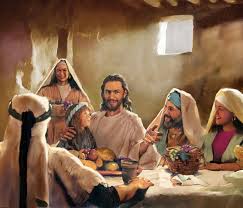
|
NEXT PAGE: Last Page of this series of 16 pages. Although as we have discovered on this page, Luke has very nearly been straightforward and honest is some places, but does PAUL ever reveal that his GOSPEL is a TRAP for some DISHONEST PEOPLE to use for their own DECEPTION? For Dr. Bob Holt's answer-- |
